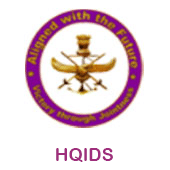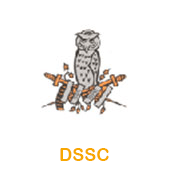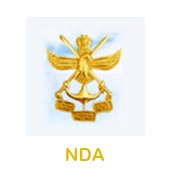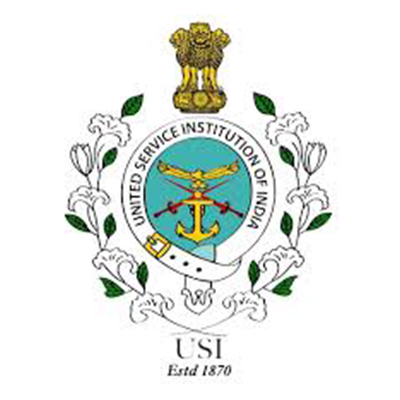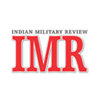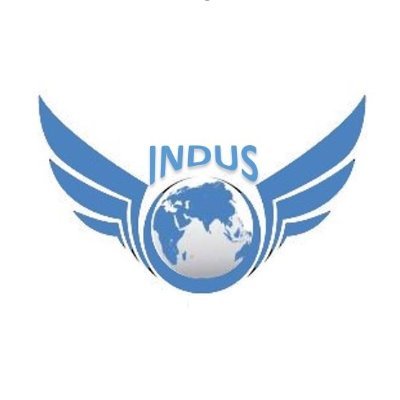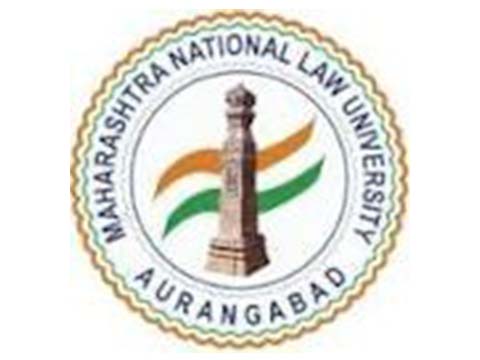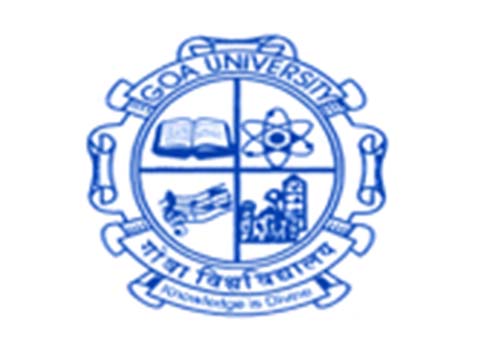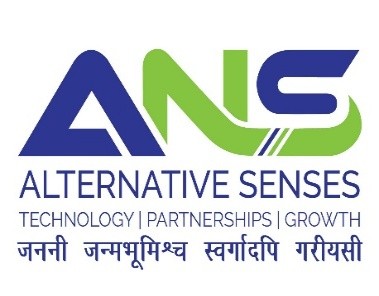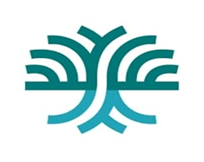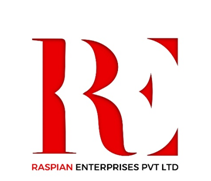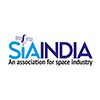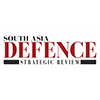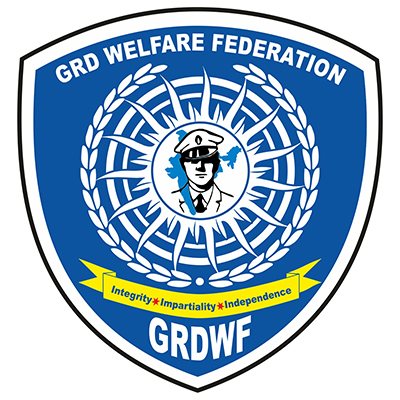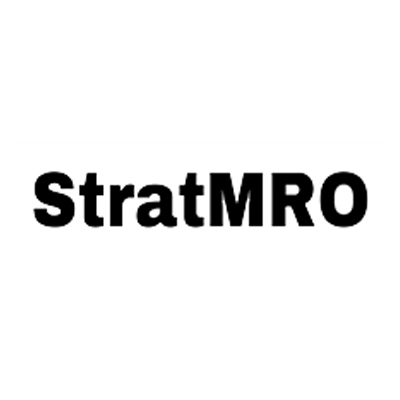
Seminar | 05-08 Sept 2020
PROCEEDINGS OF THE WEBINAR “AIR AND MISSILE DEFENCE INDIA 2020”
BY | GP CAPT GD SHARMA, VSM (RETD), SENIOR FELLOW CENJOWS
Introduction
1. To high light the need for synergy between the services and the industry amidst the current scenario of rapid technological advancements in avionics, stealth technology and precision strike capabilities of multiple aerial threat vehicles, a webinar was conducted by Indian Military review jointly with Centre for Joint Warfare Studies (CENJOWS) its Knowledge partner, from 05 Sep to 08 Sep 20.
Schedule
2. The programme was held in six sessions spread over in two days i.e. 05 Sep and 07 Sep 20 with its replay on internet on 06 and 08 Sep 20. After the Inaugural Session, the topics like Contours of Aerial Threats, Emerging Technologies, Integrated Air Defence Battle & Challenges, Atmanirbharta in Air Defence and Tracking, Control & Reporting, Common Operational Picture were covered.
SESSION-1
3. Lt Gen Vinod Bhatia, PVSM, AVSM, SM (Retd), Director of CENJOWS welcomed all the delegates and the speakers to the webinar on Air & Missile Defence and highlighted its significance. He reiterated that its aim is to bring all stake holders on a common platform where armed forces can spell out their expectations from the Industry and the Industry can explain its capacity and concerns. During deliberations, the integration of new technologies, optimizing legacy system and an action plan for the way ahead would also be projected.
Inaugural Address
4. Gen Bipin Rawat, PVSM, UYSM, AVSM, YSM, SM, VSM, ADC, Chief of Defence Staff. gave the Inaugural address in the Webinar. At the outset he appreciated conduct OF webinar on a contemporary subject and recommended that this form of deliberations should now become a norm under the COVID 19 conditions. Gen Rawat covered a vast canvas of topics in his address such as impact of COVID19 on Geopolitics and Geo-economics and its impact on the world order the contours of which are still uncertain, the ongoing defence reforms, the changing nature of warfare with various technological advancements and their effect on the war fighting etc. He also spoke on several disruptive and enabling technologies and the challenges and opportunities these offer to the defence forces. He emphasised on the need for constant innovations to stay ahead for the future wars as well as carryout upgradation/ phasing out of the legacy systems with an aim to find the best solutions. He commented that situation brought upon by COVID 19 is reminiscent of the great depression, under which the international relations are facing great stress. This is turning countries to adopt the ‘Nation’s first approach’ which is antitheses to the multilateral and multipolar relations. He remarked that India values emerging relationship with United states but, at the same time, we cherish our close ties with Russia. Talking of ongoing reforms in the ministry of defence and in the armed forces, he asserted that, inter-services integration and civil military synergy are important for effective functioning of the armed forces. The reforms relate to formation of joint commands. In particular, he discussed a great deal on the formation of Aerospace defence theatre and its ensuing advantages. He advocated flexible use of air space by aircraft, helicopters UAVs and long-range vectors. He opined that C4I systems, modernisation of the AD systems, common communication between services and integration with ISRO and DRDO will ultimately increase effectiveness of the AD system as well as avoid fratricides. Referring to the contours of air threat, he commented that in modern times, aircraft is system of systems and very potent. In fact, now both Missiles and air craft complement each other. He opined that Indian security is not confined to India‘s alone but an extended security of the neighbourhood. Finally, he concluded the talk with hope that the Webinar will deliberate all relevant issues.
Key Note Address
5. Air Mshl HS Arora, PVSM, AVSM, ADC, Vice Chief of Air Staff delivered the key note address in which he opined that future wars would present a dynamic and uncertain threat in several domains simultaneously. Now apart from Land, Sea, air and space, we also face threats in the electromagnetic domain as well. Armed forces may need to fight in all dimensions simultaneously. In this environment, the emerging technologies such as artificial intelligence presents a great opportunity. Talking of the air defence, he asserted that IAF carries out the surveillance of entire Indian air space using C4I systems which enables centralised control and decentralised execution of the operations. He reminded that, unlike past, Air defence operations have now become quite complex hence, conventional methodology of conducting operations are no more relevant. Our AD philosophy needs to redefined, focusing on the area defence concept followed by the close in defence. AD command when formed will enable integration of the AD systems of other services which surely make Air Defence more potent. He concluded his address by asking the industry to manufacture AD systems that are light weight, mobile but, at the same time very lethal.
Theme Address
6. Lt Gen Naresh Chand, PVSM, former DG Army Air Defence. He opened his talk by welcoming the new initiative of CDS in formation of joint air command. In his talk, he generally covered the historical perspective of the Army air defence which in past was primarily with L-60 guns. He commented that many of systems of 60 vintage are still being used. The modernisation is very slow. On the subject of emerging technologies, he discussed the attributes of the advanced US Patriot (PAC3) missile which while now has evolved a successful system was in past, very erratic. He was assured that DRDO is fully capable in developing the similar technologies. He however, was not in favour of reinventing the wheel by engaging in development of the technologies which have already matured. In these, he favored the transfer of technology. On integrated aerospace defence theatre, he commented that AD inherently works on jointness hence, step of integrating all resources is therefore, a good step. The environment in TBA is very complex where area of in fluence of the Battle Cdr is increasing. This calls for good coordination with air force which now will get looked after formation of Joint AD command. On the subject of indigenisation, he advocated persistent and imaginative approach of the R&D and services. He was appreciative of the announcement of import denial list announced by the government. This he felt would eventually lead to the indigenous development and manufacture of weapons.
ADB Perspective
7. Maj Gen KV Jauhar, Addl DG Perspective Planning & Head Army Design Bureau. His talk was focused on indigenisation or achieving self reliance in manufacture of defence equipment. As per him, we face three challenges in indigenisation. First, the high cost when faced with shrinking budgets second, technology relevance in our conditions and third, access to these technologies because no one is willing to share the technology. ADB seeks collaboration with technical institutes, academia and the industry and has even signed memorandum of understanding with many of these to move forward. To reach out the academia, institute and industry ADB plans visits, seminar and presentations. He said the industry can get the cue to our future focus from our website where all needs are explained. Our effort has been well received by the industry and acidaemia. He also informed that ADB has started number of projects and invested Rs. 30000 Crores towards this. ADB’s focus is on following eight technologies I.e. Big data, Artificial Intelligence, Quantum, autonomous technology, space, bio technology.
SESSION-2
8. The second session dealt with the topic of Contours of Aerial Threats. It was chaired by Air Mshl BR Krishna, AVSM, SC, Director General Air Ops, Air HQ with five panelists representing the services and the industry.
9. First Speaker. Brig Iyerfrom Bharat Forge Ltd spoke on array of evolving aerial threats and on going technological advancements in the realm of air craft, Helicopters and drones/ UAVs and missiles, directed energy weapons microwave energy weapons and charged beam particle weapons. He also discussed other related areas that make these threat highly potent and difficult to neutralise. In that, he spoke on advancements in communication system, wide area surveillance system, engine technology, armaments which can carry out precision attack from very large stand off ranges. The other topics such as data warfare, air situation in the TBA, hypersonic technology, nanotechnology and its impact on flying machines, survivability of air craft, EW suit and integrated defence counter measures were also discussed by him.
10. Second Speaker. Mr Amit Jawade, Sr Manager BD, Saarloha Advanced Materials spoke on the attributes and offerings of his company. The Saarloha Advanced Materials belongs to the Kalyani group. Its plant is located at Pune which manufactures special steels which hitherto were imported and now being manufactured in the country itself. The steel is being used in wide specialised areas such as in manufacturing Gun barrels, missile body casing, shells etc. It was also used in past by ISRO in manufacture of Chandrayan 1, Gaganyan, and in rocket casing. Saarloha advanced Materials thus occupies a pride of place in the industry in our journey for self reliance in manufacturing.
11. Third Speaker. Mr Neer Barnhart, Rafael Advanced Defence System. Israel presented his company offering Operational Air-defence Optimizer which is claimed as a tool for achieving efficient and effective AD which is facing multifarious aerial threats from varied platforms, air craft, helicopters drones etc. It has an ability to integrate the sensor inputs, analyse the threats, select optimum response from various weapon options to neutralise the threats.
12. Fourth Speaker. Gp Capt Vishal Malhotra, Gp Capt (Operations), Air HQ. in his presentation on ‘Aerospace threat’ the explained the characteristics of the air threat emanating in nuclear, conventional, sub -conventional and outer space realm. In these areas, he also carried out fact check of threats presented by China and Pakistan.
13. Fifth Speaker. Col KV Kuber, Director Defence & Aerospace, Ernst & Young was the last speaker of this session. While giving the industry perspective, he talked of several high points of the Indian Industry which has show cased developments in serval Hi- tech and state of the art technology areas in its journey towards Atamanirbhata. In that, he talked of exploits of DPSU and private industry. The basic theme was that Indian Industry is well poised to move forward in the make in India either by self innovation or in joint venture though transfer of technology route.
SESSION 3
14. The Session 3 dealt with the topic of the ‘Emerging Technologies’ It was chaired by Lt Gen (Dr) VK Saxena, PVSM, AVSM, VSM, former DG Army Air Defence. The panel in this session consisted of three speakers representing the three services to cover the developments in their respective domain.
15. First Speaker. Brig Shyam Mohan Murari, VSM, former DDG Army Air Defence Dte, Army HQ spoke on the ‘Emerging Threats from UAVs/ Drones’. After giving a detailed historical perspective, he covered the various tasks which drones / UAVs can perform replacing the manned aircraft. He also covered their use in civil where it is controlled by DGCA which allots unique ID to each UAV flight and also issues licence to the drone flyer who is required to abide with prevailing rules and regulations on the subject. Speaking of the threat, he talked of their detection by active and passive means and measures for their destruction /neutralisation. His presentation also covered a great deal on futuristic SWARM drone, autonomous drones and use of drone in a robotic wing man concept where the drone would team up with the manned aircraft as number two in formation and would be controlled in the offensive mission by the mother air craft.
16. Second Speaker. Wg Cdr M Balasubramaniam, Wg Cdr Ops (Offensive), Air HQ apprised the audience on the evolution of the air power and guiding vision, global trends, present trends in air munition developments, insight in to the present day weapons, promising technologies, trends in the delivery system and the war heads. In his talk of munitions, he too delved on SWARM , new hypersonic engines, boat glide vehicles , hypersonic cruise missile which are manoeuvrable and therefore, difficult to intercept. Revolution in military affairs is bound to take place with ushering of these new technologies in the flying machines which will make them unpredictive, more uncertain but, very accurate and lethal.
17. Third Speaker. Cdr Inder Kumar Singh, Cdr Staff Requirements, Dte of SR, Naval HQ covered the concept of defence of naval flotilla in the during the sail. In Navy, the concept of defence in depth is followed against the aerial threat of all kinds with long range weapons employed when the threat at the long ranges, followed by using medium range weapons at the medium range and at the final, short ranges weapons are employed to destroy the air borne threat. The short-range weapons have very high rate of fire and are accurate. Cdr Inder too talked of the emerging threats from the drones, hypersonic missiles and glide vehicles. Apart from direct hit weapons, the passive measure such as decoys, radar absorbent fog are also effective in deflecting the threats. In future, the direct energy weapons, electromagnetic rail guns and laser and microwave weapons which are under development and testing, hold great promise against the emerging threats.
SESSION-4
18. Session 4 dealt with the topic of ‘Integrated Air Defence Battle & Challenges’. The session was chaired by Air Mshl Anil Chopra, PVSM, AVSM, VM, VSM (Retd). A panel of two officers representing Air force and Army air defence discussed their service perspective in this session.
19. First Speaker. Gp Capt KB Mathew, Gp Capt Ops AD (C&R) Air HQ. Spoke on the topic ‘Overall Air Defence frame work and Air Space Management challenge’. After giving the aim of the air defence, he described the attributes of air defence which requires a minute to minute accurate presentation of the air situation. This is achieved by the network centric systems of the air force. He clarified that union war book clearly bestows the responsibility of air defence to the Indian air force but, he asserted that full effectiveness and efficiency can be achieved manifold by integrating the Army and naval AD assets. In his presentation, he briefly covered the high points of the peace time as well as war time air defence operations and their challenges. The main being that area of responsibility covers a vast area, for which requirement exists on 24/7 basis for all days and months. In the process, Air defence is required to monitor and identify and react appropriately after sifting data on the borders and other areas which during peace time is teeming with large amount of civil traffic. During operations, while the main objective air defence is to neutralise the air threats but, to also give maximum freedom to own weapon system as well as avoid fratricide.
20. Second Speaker. Brig Jagdeep Dahiya, former DDG Army AD spoke on the subject ‘How the integrated Air Defence Command Structure can be effective’. He fully subscribed with the idea of integration of air defence and formation of the Air defence command. He however, believed that leading service for joint organisation should be decided by the extent of the vulnerability faced and not by the bestowed responsibility. In that, he felt that army elements in the TBA face maximum vulnerability. Talking of interoperability of the data sharing and communication links, he asserted these would be effective only when integrated and not when just interoperable. He propagated integrated fire control, use of mobility and simulation tools, joint training, giving equal importance to passive defence with active defence and finally sought separate budget for the futuristic Aerospace defence theatre.
SESSION -5
21. The main theme of the 5th session of the webinar was’ Atmanirbharta in Air Defence’. The session was chaired by Maj Gen AK Channan, PVSM, SM, VSM, ADG PP & Head Army Design Bureau. A panel of three speakers addressed the session on their respective themes.
22. First Speaker. Lt Gen (Dr) VK Saxena, PVSM, AVSM, VSM, former DG Army AD spoke on the topic of ‘Army Air Defence – The need for self reliance”. Gen Saxena’s talk was focussed on the sensors and the air defence weapons. He gave a detailed account of our indigenous capability in manufacture of radars and AD weapons. Instead of importing new systems from aboard, he recommended joint manufacture with the foreign OEM’s with transfer of technology. In support of this argument, he gave example of successful development of BARAK, LRSAM which was manufactured by DRDO jointly with Israeli defence manufacturer Rafael.
23. Second Speaker. Dr Amit Kumar, Scientist F, ASL, DRDO spoke on the topic of ‘Self-Reliance and Capability Development in Critical Technologies’. Dr. Amit Kumar spoke our indigenous exploits in connection of our ballistic missile defence and anti-satellitetest, Shakti. Both ventures have successfully show cased our capability and apart from proving our indigenous technical prowess to develop and manufacture Hi tech system, it has enhanced India’s prestige world wide and given us the heft in strategic positioning in the world.
24. Third Speaker. Mr Rupesh Kuchhal, General Manager (Business Development), Hanwha International India, an Indian branch of the South Korean company which manufactures several types of the armed vehicles such as infantry fighting vehicles, medium tanks, armed personnel carriers, several types of air defence systems and launchers. He gave a detailed account of the products manufactured by his company. The company carries out considerable business with Indian defence forces and is willing to share in make in India programme by sharing technology with the Indian manufactures.
SESSION-6
25. Air Marshal Ramesh Rai, VM, former AOC-in-C Training Command IAF chaired the last session of the webinar. This session dealt with the broad subject of Tracking, Control & Reporting, Common Operational Picture. Three speakers participated in this session in highlighting the various aspects.
26. First Speaker. Lt Col, (Res) Noam Shultz, Rafael Advanced Defence Systems spoke on ‘Common operation Picture solution designed and manufactured by his company’. The product is mobile and vehicle based and assisted by artificial intelligence. It presents a composite and integrated air picture from various sensors to the operations staff, analyses and identifies the threats and gives optimum solutions to neutralise these after evaluating available various weapons.
27. Second Speaker. Air Cmde Trilok Chand, Senior Fellow, CENJOWS spoke on the “Identification Friend & Foe and Common Operational Picture”. He generally explained the various operational modes of IFF MK 12 which is being used in Air defence organisation in India. he also said NATO uses an improved version IFF Mk 12A. He briefly discussed the Automatic dependent Surveillance : Broad cast (ADS-B) which is satellite assisted system and is used in civil to track the civil flights. He finally concluded that once we have tactical data link with the American air craft platforms, we would be able to get the composite picture from their platforms too. This possibility exists upon on concluding the COMCASA agreement with United states.
28. Third Speaker. Mr Vasudevan R, Scientist F, LRDE spoke on the Latest developments in AD Radars. In the beginning of his presentation he delved on the emerging threats such as stealth air craft, unmanned vehicles and hypersonic vehicles which have low RCS and are difficult to detect therefore to counter as well. He talked of several technologies like Bi static/ multi static radars, passive radars etc. which can detect such threats. Thereafter, he covered the radar manufacturing history of LRDE which developed the first Indira radar in 1991 and have progressed tremendously from manufacturing the rotating radars to phased array radars.
Valedictory Address
29. Lt Gen Kuldip Singh, PVSM, AVSM, (Retd), Former DG Army Air Defence gave the valedictory address. He was appreciative of the move of CDS to form the Integrated Aerospace Defence Command which would bring efficiency with cost effectiveness. He too was in concurrence with the government of India declaring the negative import list of the defence equipment which positively will encourage the DPSU’ and the private industry to manufacture locally. He emphasised that we need to focus both on hard and soft kill techniques and have ability to engage the threats at all ranges. This obviously can come with robust C&R systems which is fully integrated with AD of other services.
Closing Remarks
30. Lt Gen Vinod Bhatia, PVSM, AVSM, VSM, Director CENJOWS thanked all the speakers, participants, sponsors on successful conclusion of the webinar. He emphasised that the formation of Aerospace defence theatre will eventually help further in the air and missile defence domains. The integration is not confined to the defence alone but, it also involves integration with the academia and the industry as well so that we have common focus and purpose to move ahead. The self reliance can not be a slogan rather it should become the norm. We import nearly 60% of the weapons from abroad which must change if we are to truly become power in this region.

